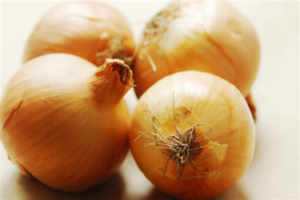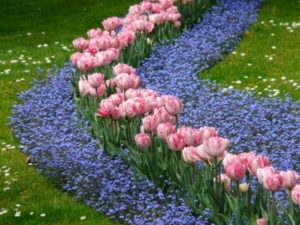
Without a doubt, horticulture is just like a science. In that, it also comes with its fair share of slang and terminologies that come in handy from time to time. In This post we will go over the most commonly used gardening terms i been able to compile. With the focus on newbies.
That being said, whether you are an old pro or a newbie trying to decode these jargon’s of the horticultural world, this article got you covered!
Having had 9 years of experience in this gardening spectrum, I have compiled a list of all gardening terms that you will need to start speaking this lingo.
So let’s get to it!
‘A to Z’ Gardening Phrases You Need to Know
⦁ Growing Mediums and their Components
Organic Matter: This is the dead and decaying matter from either animal’s tissues or plants.
Primarily organic matter is a major part of compost piles and they are a key ingredient in the composition of healthy soil.
This organic matter could include manure, roots, leaves, earthworms, compost piles, microbes, and dead insects.
Peat Moss: This is a vital ingredient in the composition of the potting soil. It consists of decaying plant materials that you may have collected during a certain period of time.
Peat moss is more like a spongy material. The best thing about it is that it comes with an exceptional capacity to hold water. Also, it is used where you need a lower PH for the plants that thrive best in acidic conditions.
Worm castings: This is the excrement that comes from earthworms. When the earthworms eat then digest different organic matter, they convert it to worm castings which is a highly fertile substance.
Mulch: This is a composition of the material that is used to protect the topsoil.
It includes a wide variety of things that include straw, wood chips, and even bark nuggets.
Mulch comes with a wide range of advantages including protecting the soil from erosion, conserving the moisture in soil. Adding nutrients and organic matter in the soil as well as keeping the roots of your plants cool and healthy.
Vermiculite: This is one of the main ingredients that is used in the potting soil.
Vermiculite features a material that resembles mica mineral that has been heated. Hence, it resembles a spongy material and has a great capacity for holding water and air. In some way, it has similar properties to the perlite.
Topsoil: This is the fertile and biologically active layer of soil that is on the top surface of the soil.
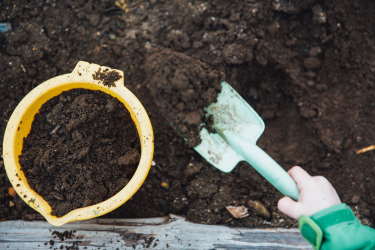
The topsoil includes a couple of components including hummus, insects, earthworms, microbes as among other components.
⦁ Gardening Terms Plant Terms, and Nutrients
Top Dress: This is the process of spreading either compost or fertilizer on the surface of the soil before starting to garden your land.
This is different from tilling the amendments into the soil. Topdressing is majorly used when you need to apply fertilizers on lawns.
Soil Amendments: These are any substances that you add to your growing area in order to improve the condition of the soil in that area.
Soil amendments could either be fertilizers, compost, green sand, and rock sand.
Side Dressing: this is the application of fertilizers on to the soil on the sides of the growing areas or gardening bed.
This is done in order to ensure that the garden has adequate levels of nutrients throughout a growing season.
PH: This is the relative measure that helps us to determine either the alkalinity or the acidity of the soil.
This is crucial in gardening as it is important to know the conditions in which plants will best thrive in.
Potassium: An essential nutrient that plays a key role in the various function of the plants.
Potassium is normally abbreviated as K especially in fertilizing products. Some of the common sources of organic potassium include wood ashes, kelp meal, and green sand.
Phosphorus: Also another very essential nutrient that plays a key role in the metabolic function of the plant and photosynthesis.
In fertilizing products, phosphorus is normally abbreviated as P. One of the common sources for organic phosphorus is rock dust. Definitely one of my favorites!
Nitrogen: Nitrogen is a key nutrient that takes responsibility for growth of vegetative plants.
In fertilizing products, nitrogen is abbreviated as N. As for the organic sources of Nitrogen, we have blood meal, animal manure, fresh vegetation, and fish meal.
N-P-K: This is a ratio of nitrogen, phosphorus, and potassium in the plant nutrients.
On the fertilizing products, you will see three numbers that are listed on the bags. These numbers correspond with percentage of the above-listed nutrients that are present in the product.
Nitrogen Fixing: Plants tend to form a symbiotic relationship with the microbes present in the soil.
These soil microbes help to chemically convert the nitrogen present in the atmosphere in to as soluble form. Hence, this nutrient helps in the rapid growth of the plants.
Compost Tea: This is a liquid fertilizer that is made through soaking compost manure in water.
In an effort to extract the necessary requirements. In addition to that, an aerator is used in order to allow the growth of beneficial micro-organisms.
⦁ Gardening Terms For Seedlings
Hardening off: A gradual process that involves leaving seeds outdoors exposed to the outdoor conditions for a few hours every day.
This a great step that you can take before planting as it helps to minimize the chances of shock when the seeds are transplanted in your garden.
Bare root: This is a plant that is sold without soil or a pot around the root zone.
In early spring or winter when the plants are fully dormant is when you can get bare-root vines, shrubs, and trees.
Cuttings: These are short pieces of plants that are in most cases clipped off for the purposes of propagation.
These cuttings get attached to root mediums such as perlite or potting soil. When kept in a humid environment, the roots form on the bottom section and leaves on the top part.
Direct Seeding: This is a gardening term or method used in sowing seeds directly where they will grow. Instead of first planting them in pots then transplanting to the garden later.
Scarification: A process that involves the penetration of the outer layer of seeds in order to encourage the germination of the seeds.
Although this highly depends on the species you are dealing with, some of the common tools used in scarification include sandpaper that is used to open that hard outer coat of the seed hence allowing entry of water.
Stratification: In this case, you expose your seeds to certain conditions in order to break their dormancy.
This process allows faster germination of the seeds. One of the most popular forms of stratification is storing the seeds in a freezer for a month or more as required.
Germination: This is a technical term that is used to refer to the sprouting of seeds.
Germination occurs when the seeds break dormancy then start growing into both roots and shoots above the ground levels.
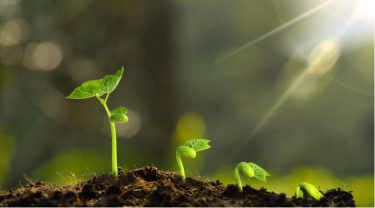
Leggy Plants: These are plants that tend to have very long stems which are a result of insufficient sunlight.
Leggy plants grow very long as they stretch desperately towards the available source of light. They generally appear weak.
⦁ Horticulture Terms and Methods used in Gardening
Deadheading: a process that involves the removal of spent bloom in the flowering plants.
This helps to encourage other flowers to emerge.
Crop rotation: This is a deliberate system that involves the planting of crops across different places throughout the year.
It helps to prevent the build-up of pathogens that might be linked to a certain plant in the soil.
Cold Frame: A structure that is meant for season-extending that is used to enclose the growing area.
It helps to hold the heat from the sun in spring or fall. It looks like a smaller version of a greenhouse and it could be made of plastic and glass sheets or any other type of transparent materials.

Cold Frame
Credits: WayneRay [CC BY-SA 4.0 (https://creativecommons.org/licenses/by-sa/4.0)]
Hydroponics: This is a science of growing plants that involves growing of plants in a mineral solution instead of using soil.
Organic gardening: This is a gardening method that involves the building of healthy soil.
That will not only feed but support the healthy growth of the plants. Organic gardening is easily achieved by supplementing the soil with the naturally occurring matter such as compost and other nutrient sources.
Foliar fertilizing: The direct application of fertilizers on to the plant leaves.
Xeriscaping: A process that involves the creation of a low maintenance landscape that will help to reduce water usage.
Ground cover: This is a plant that tends to spread itself on the ground while rooting itself.
This kind of plants is great in landscaping a large area on a small budget.
⦁ The Structure and Growth of Plants
Variegated: This refers to plants that come with multiple colors.
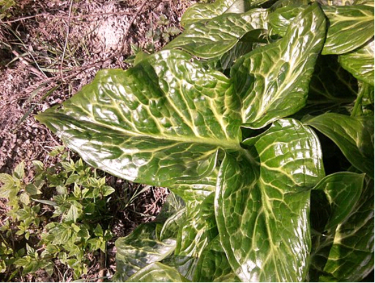
Variegated Leaves
Credits: Threecharlie [CC BY-SA 3.0 (https://creativecommons.org/licenses/by-sa/3.0)]
Damping-off: This is a plant disease that in most cases is caused by pathogens.
Such are pathogens that tend to kill the seedlings as soon as they sprout. All in all, this is something that you can fix by encouraging proper flow of air and avoiding excessive moisture.
Deciduous: These are plants that tend to lose their foliage during the winter season.
Bolting: A process in which annual plants prematurely produce flowers in the attempt to reproduce.
When a plant bolts, it tends to divert its energy from producing the edible parts of the plant like the leaves and roots and focus on the production of flowers. Bolting mostly happens before you harvest the plants which lead to having bitter and low-quality products.
Biennial: This is a plant that has the capability of living through two growing seasons.
In that, it could produce leaves during the first year, during the second year flower and then produce seeds.
Perennial: This is a plant that lives one year after the other.
Most of the perennial plants are vines, shrubs, and many other herbaceous plants.
Pinch back: A process that involves the removal of the tip of a growing stem.
This could be done with pruners or just with your bare hands. It helps to stimulate the low down of branching which makes it possible for you to get a shorter and growth of the plants.
Half-hardy perennial: This is a category of plants that cannot thrive in cold weather.
Hence, for them to survive, they must be brought indoors during winter. A few examples of such plants are begonia, heliotrope, and fuchsia.
Cross-Pollination: This is a process that involves fertilization of either two or more plants that belong to the same species.
Cross-pollination is necessary for plants as it helps with the production of crops.
⦁ Plant Growing Seasons and Conditions
Furrow: This is a small trench that is found between two or more planting beds.
Wet Feet: This is a growing condition that has very waterlogged conditions especially around the root area.
This is a gardening term and condition that can lead to your crops getting fungal diseases or even lead to the sudden death of your crops.
Warm-season crops: These are annual crops that thrive best in warm conditions.
Such plants include; basil, okra, melons, tomatoes, cucumber, and squash among others. Such crops will do well when the temperatures outside are between 75 and 85 degrees Fahrenheit.
Day-neutral: These are the type of plants whose flowering is not determined by the length of the day.
Such crops include corn, tomatoes, potatoes, as well as cucumbers. However, there are some plants that are not day-neutral such as strawberries.
A growing season: This gardening term simply means the number of days in between the last date of frost in spring and the first day to frost in autumn.
As most plants require a certain minimum number of days to get to maturity, it is important that you give them an adequate growing season.
Cool-season crops: These are annual crops with the capability of thriving well in cool conditions.
Such crops include potatoes, broccoli, radishes, beets, peas among others. These are simply crops that do well in the day time temperatures of 60 and 80 degrees Fahrenheit.


